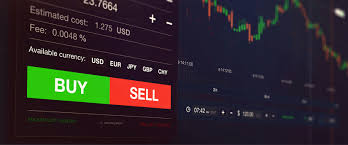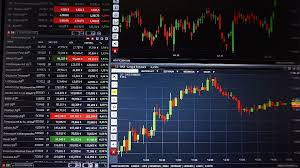
Understanding Forex Currency Trading: Strategies, Tools, and Market Analysis
Forex currency trading, often referred to as the foreign exchange market or simply forex, is a decentralized global market for exchanging national currencies against one another. It is the largest financial market in the world, with a daily trading volume exceeding $6 trillion. Traders in this market, including individuals, businesses, and financial institutions, profit from fluctuations in currency values. For those looking to start their journey in forex, it’s essential to understand the fundamentals, available resources, and effective trading strategies. If you’re in South Africa, consider researching forex currency trading Forex Brokers in South Africa to find the best options for your trading needs.
The Basics of Forex Trading
Forex trading involves buying one currency while simultaneously selling another, usually quoted in currency pairs. For example, when trading the EUR/USD pair, you would be buying Euros while selling US Dollars. The price of this pair indicates how much of the quote currency (USD) is needed to purchase one unit of the base currency (EUR).
Currency Pairs
Currency pairs are classified into three broad categories:
- Major pairs: These pairs include the most traded currencies globally, primarily involving the US Dollar, such as EUR/USD, USD/JPY, and GBP/USD.
- Minor pairs: These consist of currencies that are less frequently traded and do not involve the USD. Examples are EUR/GBP, AUD/NZD, and EUR/AUD.
- Exotic pairs: These are pairs that involve a major currency and a currency from a developing economy, such as USD/TRY (Turkish Lira) or EUR/MXN (Mexican Peso).
Trading Strategies
Effective trading strategies can enhance your chances of success in forex trading. Here are some common strategies:
Day Trading

Day trading involves executing multiple trades within the same day, with the goal of profiting from short-term price movements. Day traders typically close all positions before the market closes to avoid overnight risk.
Swing Trading
Swing traders hold positions for several days to capture price swings in the market. This strategy requires traders to analyze market trends and use technical indicators to identify potential entry and exit points.
Scalping
Scalping is a highly active trading strategy where traders make dozens or hundreds of trades in a single day, aiming to profit from small price changes. This requires a disciplined approach as well as quick decision-making and execution.
Position Trading
Position trading is a long-term strategy where traders hold positions for weeks, months, or even years based on fundamental analysis and market trends. This strategy requires less frequent trading and can be less stressful for traders.
Technical and Fundamental Analysis
To succeed in forex trading, understanding and applying both technical and fundamental analysis is crucial.
Technical Analysis
Technical analysis involves analyzing historical price data and using charts to predict future market movements. Traders utilize various tools such as:

- Charts: Line, bar, and candlestick charts are commonly used to visualize price movements.
- Indicators: Tools like Moving Averages, Relative Strength Index (RSI), and Bollinger Bands help traders assess market conditions.
- Patterns: Recognizing patterns such as head and shoulders, triangles, and double tops can assist in forecasting price movements.
Fundamental Analysis
Fundamental analysis involves evaluating economic indicators, such as interest rates, inflation, employment figures, and geopolitical events, to gauge the overall health of an economy and its currency. Key economic reports include:
- Gross Domestic Product (GDP): A measure of economic performance.
- Employment Data: Reports like Non-Farm Payrolls (NFP) showcase job growth in an economy.
- Inflation Rates: Consumer Price Index (CPI) and Producer Price Index (PPI) indicate price changes over time.
Risk Management
Risk management is critical in forex trading. Here are some vital strategies traders use to protect their capital:
- Stop-Loss Orders: Setting stop-loss orders can limit potential losses by automatically closing a trade at a pre-determined price.
- Position Sizing: Determining the appropriate amount to risk on each trade can help manage overall exposure.
- Diversification: Avoiding putting all capital into onetrade can reduce risk.
Choosing a Broker
Choosing the right forex broker is fundamental to successful trading. Factors to consider include:
- Regulation: Ensure the broker is regulated by a reputable financial authority.
- Trading Platform: Evaluate the trading platforms offered, such as MetaTrader 4 or 5.
- Spreads and Fees: Look for competitive spreads and transparent fee structures.
- Customer Support: Quality customer service can assist with any trading issues or inquiries.
Conclusion
Forex currency trading can be an exciting and profitable endeavor, but it requires diligent research, education, and practice. By understanding the fundamentals, utilizing effective strategies and tools, and practicing sound risk management principles, traders can enhance their chances of success in this dynamic market. As the forex market continues to evolve, staying informed about market developments and broker options, especially in regions like South Africa, remains essential for traders at all levels. So equip yourself with knowledge, choose your broker wisely, and approach the market with confidence.


